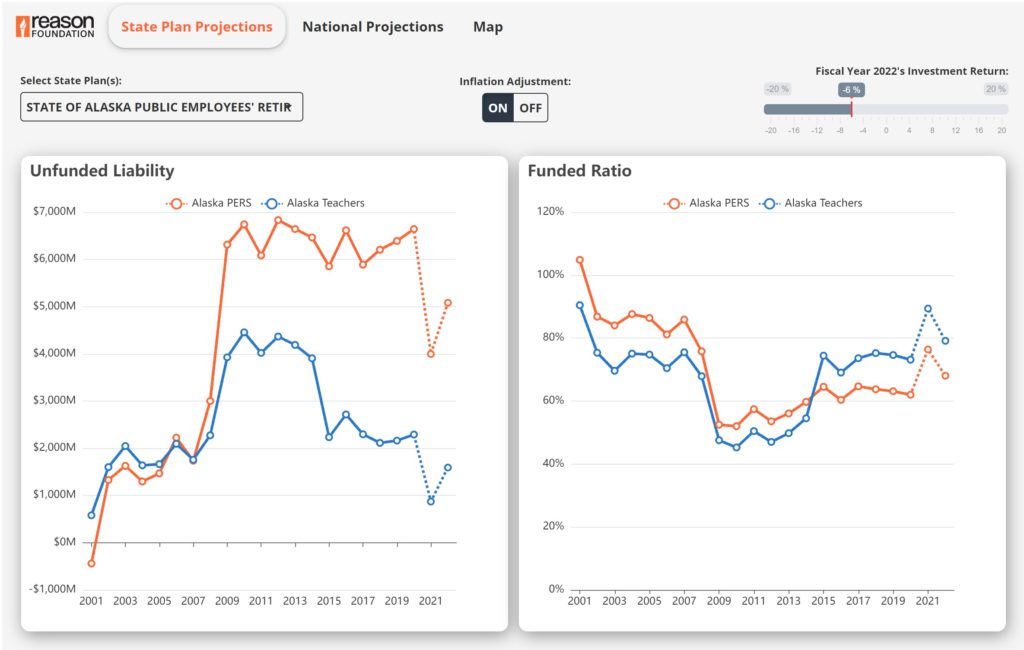Alaska has a problem. Over a quarter of its promised public pensions have yet to be funded, known as unfunded liabilities, leaving the state in a precarious financial position. In recent years, the state has failed to make the necessary payments to fully fund these pensions, leading to mounting deficits and concerns over the long-term stability of Alaska’s public retirement system.
Alaska’s unfunded liabilities are from its Public Employees Retirement System (PERS) and Teachers Retirement System (TRS). Unfunded liabilities represent the present value of retirement benefits that have been promised to state workers but are not yet funded. Over the last two decades, Alaska’s unfunded liabilities in PERS and TRS have increased from almost fully funded to only 71.6% funded in 2022, as forecasted by Reason Foundation. This means that Alaska has approximately 72 cents for every dollar it has committed to state employee retirees.
Retirement systems that are less than fully funded are a problem because large contributions from state revenue will be required to address the debt and because smaller assets generate less in investment earnings.
In contrast, Washington state’s pension plans were forecasted to be over 107% funded in 2022, even with a -6% investment return. New York and Wisconsin’s systems were forecasted to be over 99% funded. On the other hand, Connecticut, Kentucky, and New Jersey were all forecasted to be less than 50% funded.
Ultimately, Alaska’s unfunded liabilities present a significant financial risk for the state. In order to avoid further fiscal crisis, Alaska policymakers must take action to reduce its unfunded liabilities and stay away from implementing harmful and more expensive changes to the plans. During this time of economic volatility, policymakers and stakeholders should find ways to address and minimize the financial risks associated with Alaska’s pension plans, rather than add to the plans’ unfunded liabilities.
